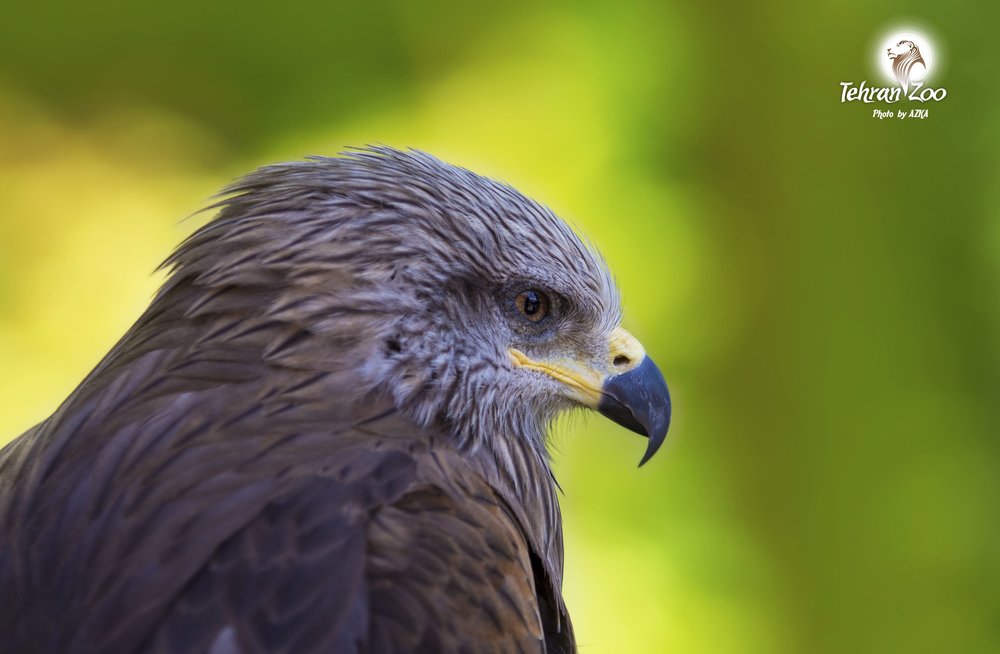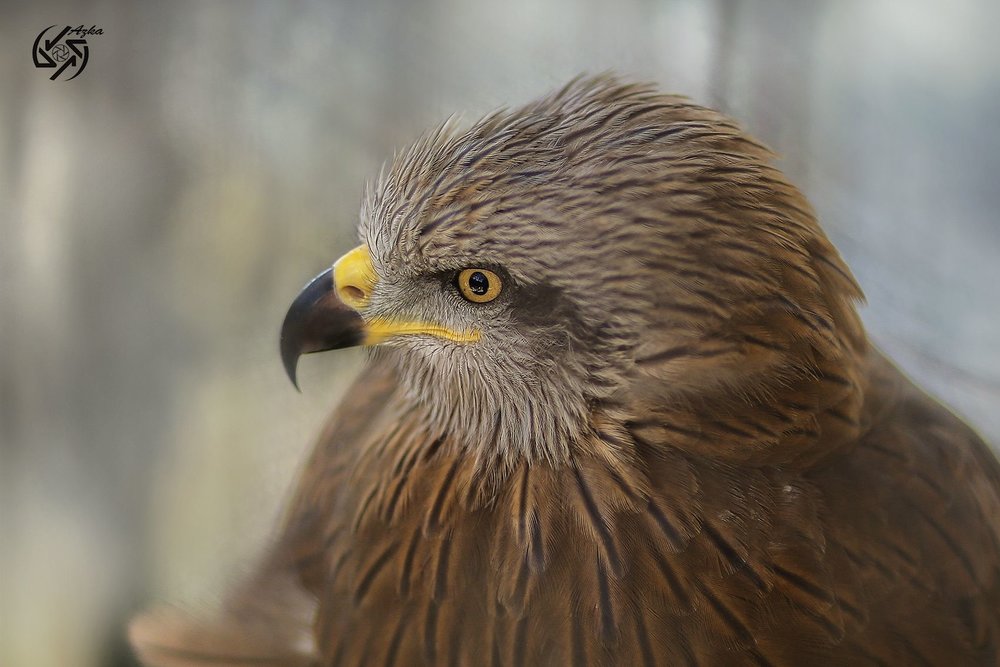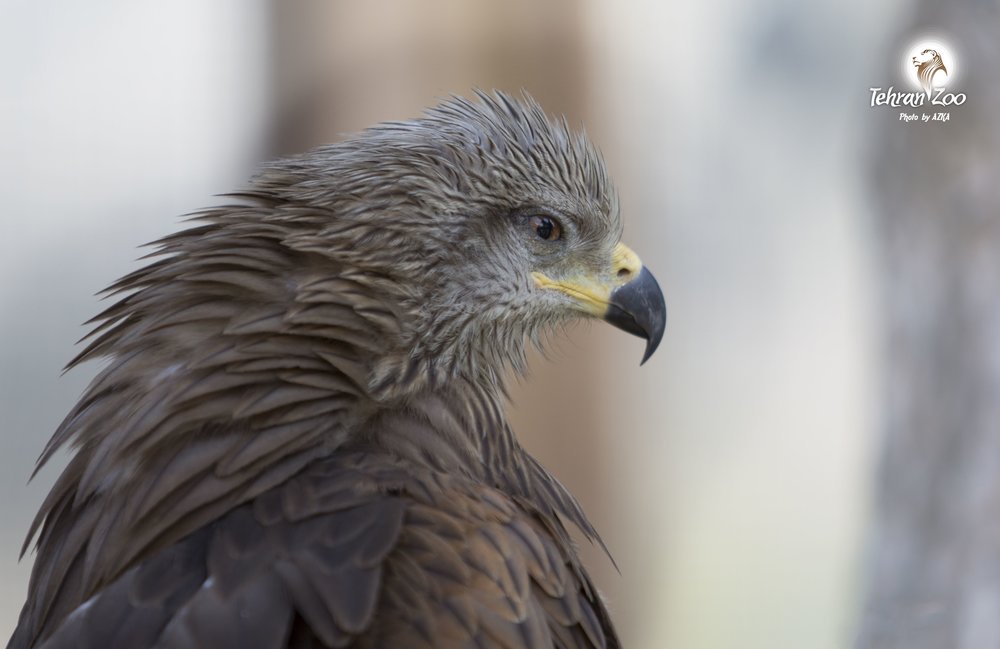Black Kite, the most abundant raptor

Which characteristics make a bird of prey? Exceptional eyesight capable of spotting prey many kilometers away is the most important sense used by birds of prey.
Powerful talons, a meat-ripping bill and an ability to soar with the minimum effort or power dive at an extremely high speed complete the weapons store of these skilled and formidable aerial predators. Black kites have migratory trends, most winter in Africa south of Sahara and smaller numbers also in the Middle East, and rarely in South Europe.
Identifying Black Kite is not always simple, especially when seen from a distance but in this picture, the main keys of identification are obvious.
Raptors diet
The diet of various kinds of raptors ranges from locusts, grasshoppers and flying termites to frogs; snakes, lizards, tortoises and other reptiles, fish, game birds and other birds, rats, mice, ground squirrels and other rodents, mongooses, hares, and small antelope. The presence of raptors is crucial to maintain a healthy environment, and their disappearance from an area could ultimately contribute to serious environmental problems.

In the wild, birds of prey have few natural enemies except, perhaps, other birds of prey. In many habitats they are the top predator. They have only one enemy to fear most: Human beings.
Over the centuries, people have hunted raptors as vermin (pests) because they have occasionally killed domestic livestock, such as birds. Recently humans have been killing birds of prey indirectly by using pesticides on seeds and crops. When birds catch contaminated animals, pesticides build up in their own bodies and eventually poison them, causing death.
Many birds of prey are now protected by law in Iran but it seems that Black Kite doesn’t need specific conservation plan at this time. However, the indiscriminate shooting of migrating birds, chemical contamination and destruction of habitats in which they live are still main threats not just for Black kites but also for all raptors in Iran.
Like an arrow
Hawks, eagles, vultures, kites, ospreys, falcons, and owls are all among the birds sometimes considered raptors, or birds of prey.
Raptor is derived from the Latin verb rapere which means to grab, to seize, to carry away, which entered English centuries ago, also meaning rapid, rapt, rape, rapacious, rapture, ravenous, ravish, and raven, as in ravening wolves, not the bird.
In the wild, birds of prey have few natural enemies except, perhaps, other birds of prey. In many habitats they are the top predator. They have only one enemy to fear most: Human beings.
Beautiful eyes
Humans rely on five senses to find out about the world. However, most birds live using just the two senses of sight and hearing. In birds of prey, sight is by far the most important sense for finding and hunting the prey they need to survive. Their eyes are exceptionally large in relation to the size of the head and they are set in the skull so that they look forward.
This binocular (two-eyed) forward vision enables them to judge distances accurately when hunting. The eye color of Black Kite is black and brown as you can see in the picture, they have keen eyesight but the night vision is not good.
Communication channels of Black Kites consist of visual, tactile, and acoustic. Black Kites such as some harriers and hawks use their keen sense of hearing to hunt too. Bird’s ear openings are quite small. They are set back from the eyes and cannot be seen because they are covered in feathers. Those beautiful eyes and excellent hearing sense of Black Kites allow them to spot their prey from far distances.
Body works as a best tool
Birds of prey such as Black Kite differ from other birds in a number of ways, particularly in their powerful bills and feet, which are well adapted to their life as hunters. Also unlike most other birds, they regurgitate (cough up) pellets. These contain the parts of their prey they cannot digest. Underneath their feathery covering, raptors have a complex system of internal organs. Unlike humans, most birds have a crop to store food in before digestion. They also have a gizzard to grind up hard particles of food, such as bone, and to start the process of making a pellet. Birds also have a syrinx (the bird equivalent of the human vocal cord).

Closer vision to their lives
Black Kite nest type is quite similar to cup. Their nests prepare on trees by both sexes (female and male). Black Kites prefer valleys, wetland, and woodlands. They are abundant in Iran but migrate to the tropics in winter. They live close to the blue zones, lakes, sea shores and densely wooded areas.
Crows’ disused nests and trees are best places for nesting. Black Kites are social and nest close to their groups. Their average life span is calculated 24 years. They have diurnal trend and insects, lizards, rats, reptiles, and small sambals are considered as their diet content.
They are native in Iran and as IUCN (International Union for Conservation of Nature and Natural Resources) assessed this species has an extremely large range, and hence does not approach the thresholds for Vulnerable under the range size criterion.
Despite the fact that the population trend appears to be decreasing, the decline is not believed to be sufficiently rapid to approach the thresholds for Vulnerable under the population trend criterion (>30% decline over 10 years or three generations). For these reasons the species is evaluated as Least Concern.

Leave a Comment